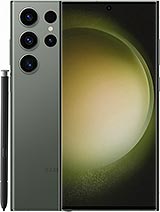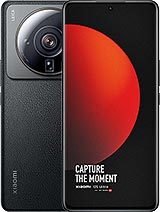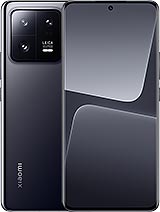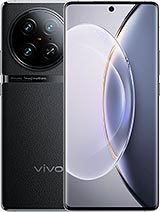Introduction
Here at GSMArena, we're shutterbugs above anything else. Camera upgrades are probably the single biggest reason we get excited about new flagship phone releases, and when it comes to those, we've definitely been spoiled in the last couple of years.
We've seen so many great phones come around, with each outdoing the next in hardware and software, with photography improvements coming in leaps and bounds. Our office has seen many heated discussions about which phone has the best camera. Frankly, we were all looking forward to coming up with a direct head-to-head comparison that can settle this - at least for the time being.




Samsung Galaxy S23 Ultra • Xiaomi 12S Ultra • Xiaomi 13 Pro • vivo X90 Pro
So we decided to pit several of the best Android camera phones against one another in a photography-only bout. We have lined up the new Galaxy S23 Ultra, Xiaomi 13 Pro, and Vivo X90 Pro, as well as the Xiaomi 12S Ultra, and we shot a few (hundred) photos and put them side by side and see what's what. We meant to have the Pixel 7 Pro in this comparison, but this one was not available at the time of testing so that we might include it in a follow-up to this head-to-head.
Three of these phones have a 1-inch type sensor, one has 200 million pixels, all of them can capture 8k video, and some can zoom to the moon and back from the comfort of your pocket. One might even say they don't even need to see the moon to take a picture of it (too soon?). It's crazy to think phones have come this far. It's even crazier to think what will be possible in just a few more years.
But let's focus on the nowadays and see which phone deserves to be called the best camera phone in 2023. We're focusing on photo-taking for this one to keep things manageable. Video is a whole other thing entirely.
We're also focusing on the main, ultrawide, and midrange zoom cameras on the Galaxy, Xiaomi, and Vivo - Samsung's 10x zoom is more of a specialty lens that doesn't directly compare to the midrange zooms of our chosen phones. We're also looking at behind-the-lens performance so that you won't see any selfies here.
 Two Pros, Two Ultras: vivo X90 Pro • Xiaomi 13 Pro • Galaxy S23 Ultra • Xiaomi 12S Ultra
Two Pros, Two Ultras: vivo X90 Pro • Xiaomi 13 Pro • Galaxy S23 Ultra • Xiaomi 12S Ultra
Finally, we're looking at straight-out-of-the-camera results. We're not doing post-processing or RAW editing. Every phone in this lineup has the ability to shoot RAW as well as powerful built-in apps and features to give the budding photographer more ways to capture the moment - our aim is to see which phone gives you the best baseline.
Sound like fun? Let's look at some photos.
Imaging hardware
Before we start looking at photos, let's do a rundown of the phones' imaging hardware. All four phones enter our comparison with three cameras - a wide camera (the main one), an ultrawide, and a midrange zoom option. To reiterate, the Galaxy S23 Ultra's 10x camera isn't a subject of this comparison as it's more of a specialty lens, plus it would be a nightmare to compare properly against the zoom cameras in this test.
| Ultrawide | Primary | Zoom | |
| Galaxy S23 Ultra | 12 MP f/2.2, 13mm | 200 MP f/1.7, 24mm | 10 MP f/2.4, 70mm, 3x |
| Vivo X90 Pro | 12 MP f/2.0, 16mm | 50.3 MP f/1.8, 23mm | 50 MP f/1.6, 50mm, 2x |
| Xiaomi 13 Pro | 50 MP f/2.2, 14mm | 50.3 MP f/1.9, 23mm | 50 MP f/2.0, 75mm, 3.2x |
| Xiaomi 12S Ultra | 48 MP f/2.2, 13mm | 50.3 MP f/1.9, 23mm | 48 MP f/4.1, 120mm, 5x |
Samsung Galaxy S23 Ultra
The Samsung Galaxy S23 Ultra premiered a brand new sensor this year - the 200MP ISOCELL HP2. It's a 1/1.3-inch with 0.6µm pre-binned pixels sitting behind a 23mm equivalent f/1.7 stabilized lens.
This sensor uses what Samsung calls Tetra2pixel RGB Bayer Pattern color filter, which groups 16 pixels into 1, effectively outputting 12MP images with 2.4µm individual pixels by default. The sensor can also output 50MP 1.2µm images in both RAW and JPEG, as well as full 200MP JPEGs with HDR.

This is the highest-resolution sensor in our lineup but also the smallest main sensor - the HP2 has nearly 80% less surface area than the 1-inch type sensors in the other three phones. The 1-inch type sensor is huge if that hasn't come across yet.
The rest of the setup (that we'll be focusing on) is a 10MP 3x midrange zoom and a 12MP ultrawide. The 3x camera has a 69mm equivalent focal length optically stabilized lens with an f/2.4 aperture and a 1/3.52-inch sensor with 1.12µm pixels. This camera outputs 12MP images.
The ultrawide is a tried-and-tested 12MP 1/2.55-inch sensor with a 1.4µm pixel pitch and a 13mm f/2.2 lens with autofocus.
Xiaomi 12S Ultra
The Xiaomi 12S Ultra was the first mainstream smartphone with a 1-inch type sensor with phase detect autofocus, and it produced predictably amazing results. It's the 50.3MP Sony IMX989 imager, and it has 1.6µm pre-binned individual pixels. Those balloon up to 3.2µm after the 4-in-1 binning takes us to the final 12.5MP resolution. These are the biggest here, and it shows - more on that in a bit.
The lens in front of the 1-incher is a 23mm equivalent stabilized f/1.9 glass with Leica branding.

The other two cameras on the Xiaomi 12S Ultra are the 120mm 5x telephoto and the 13mm ultrawide. They both use the Sony IMX586 1/2.0-inch sensor with 0.8µm pre-binned pixels, which shoot up to 1.6µm after binning. The telephoto uses a periscope lens with an f/4.1 aperture (the dimmest one here), while the ultrawide has dual-pixel autofocus and f/2.2 glass.
Xiaomi 13 Pro
The Xiaomi 13 Pro inherits the main camera of the 12S Ultra, even down to the lens - it's a 50.3MP 1-inch type sensor with huge 1.6µm pre-binned pixels, a 23mm equivalent f/1.9 lens with OIS and phase-detect autofocus. The ultrawide is a 50MP 1/2.76-inch camera with 0.64µm pre-binned pixels, a 14mm equivalent f/2.2 lens, and autofocus.

The zoom camera is an entirely new sensor, and it's one of the highlights of the Xiaomi 13 Pro. It's another 1/2.76-inch 50MP sensor with 0.64µm pre-binned pixels, sitting beneath a 3.2x zoom with a 75mm equivalent focal length, an f/2.0 optic with phase-detect autofocus, stabilization (both of the lens and the sensor - Focal Shift and Floating lens technology), and the ability to focus as close as 10cm for some interesting macro shots.
Vivo X90 Pro
The Vivo X90 Pro has the same 50.3MP 1-inch type sensor (with those aforementioned huge 1.6µm pre-binned pixels) as the Xiaomi's, but the lens it uses is a brighter and slightly wider 23mm f/1.8 lens.
For zoom, the Vivo uses a 50MP 1/2.4-inch imager with 0.7µm pre-binned photosites and a 50mm equivalent (2x) f/1.6 stabilized lens on top.

The X90 Pro's ultrawide is the tightest of the four phones at 16mm. The sensor behind it is also on the smaller side at 12MP and 1/2.93-inch with 1.22µm pixels (no binning here). But at least it does focus, and the lens is bright at f/2.0.
The sensors put into context
Now, let's put those sensors in relation to one another. Putting sensor sizes in inches is a leftover practice from the 1950s, when they used video camera tubes to project an image over the size of the sensor. That glass tube had its diameter measured in inches, which is why that's still used to denote the sensor's size. It's a relic, and if you ask us, the industry should already move past that and quote the physical dimensions instead. But we digress.
To make sense of the optical format of the sensors in this review, let's sort them by their physical sizes - no confusion there. We calculated the physical area of each sensor (we got that by finding the sensor's length and width in square millimeters), and we also threw in the individual photosites (pixels) size - both before binning and after. Note that the Samsung Galaxy S23 Ultra's 12MP ultrawide and 10MP zoom, and the Vivo X90 Pro's ultrawide don't combine pixels, so their pixel pitch doesn't change.
 Camera closeup: Xiaomi 12S Ultra • Galaxy S23 Ultra • vivo X90 Pro • Xiaomi 13 Pro
Camera closeup: Xiaomi 12S Ultra • Galaxy S23 Ultra • vivo X90 Pro • Xiaomi 13 Pro
The table below gives us a clearer idea of how the sensors stack up. The 1-inch type sensor that's used for the primary camera in the Xiaomi 12S Ultra and 13 Pro and the Vivo X90 Pro is by far the biggest here. It's nearly 80% larger than the 200MP sensor in the Galaxy S23 Ultra - calling it twice as big isn't that much of a stretch. That's reflected in the size of its individual pixels when it outputs 12.5MP final images - they're huge. That means that they have much better quality light/color-gathering capabilities.
Samsung's new 200MP camera is the second largest in this group - more than twice (130%) as big as the next biggest sensor. So, it's pretty big as phone sensors go; it's just nowhere near that 1-incher.
| Sensor type | Physical size in mm2 | Pre-binned pixels | Binned pixels | |
| 12S Ultra, 13 Pro, X90 Pro 50.3MP 1x | 1" | 128.87 | 1.6µm | 3.2µm |
| Samsung Galaxy S23 Ultra 200MP 1x | 1/1.3" | 71.86 | 0.6µm | 2.4µm |
| Xiaomi 12S Ultra 48MP 0.5x, 5x | 1/2.0" | 30.72 | 0.8µm | 1.6µm |
| Samsung Galaxy S23 Ultra 12MP 0.5x | 1/2.55" | 23.52 | 1.4µm | 1.4µm |
| Vivo X90 Pro 50MP 2x | 1/2.4" | 22.15 | 0.7µm | 1.4µm |
| Xiaomi 13 Pro 50MP 0.5x, 3.2x | 1/2.76" | 20.46 | 0.64µm | 1.28µm |
| Vivo X90 Pro 12MP 0.6x | 1/2.93" | 17.86 | 1.22µm | 1.22µm |
| Samsung Galaxy S23 Ultra 10MP 3x | 1/3.52" | 12.52 | 1.12µm | 1.12µm |
200MP vs 1-inch sensors in good light
Let's start with the main cameras in good light. Here, the biggest differences will be in color rendition, sharpening algorithm and noise reduction. These are optimal conditions where every camera performs to the best of its abilities.
We shot all phones in their native camera app with the default settings. That means that all the main camera shots are pixel-binned at 12MP, and have their out-of-box scene recognition and HDR turned on. The Vivo X90 Pro was in the Vivo vivid mode, not the Zeiss Natural color mode. We tested both (which made our task of shooting much longer) and can honestly say that the photos look technically identical, save for the color rendition. Going for the Zeiss Natural profile will result in maturer-looking photos, which will show the Vivo in a different light in our comparison. But we made a judgment call - keep the camera at its default setting - vivid and lively, which we also happen to prefer.
It's a similar situation with the two Xiaomis - we shot in their default Leica Vibrant modes. Here, there was more of a difference in the output - the Leica Authentic mode goes for an artsy look - the dark tones of the images are pushed further down, moving into heavy tonal contrast territory. Sharpening is lowered, and most photos get a heavy vignette around the edges. Once again, we went for the default setting.

We strived to capture identical frames with all the cameras. We did it by aligning certain points in the image with the gridlines of the phone's camera apps. This is easier said than done, especially when comparing the zoom cameras - there was some careful zooming in or out with our feet and tilting the phone itself to match the framing. Still, there could be some slight misalignment from shot to shot and phone to phone.
After looking at the images in good light, some general tendencies of the respected cameras become clear. For starters, there are two types of photo-taker here - the more balanced shooters - the Galaxy S23 Ultra and Xiaomi 13 Pro - and the punchier, more exaggerated shooters - the Vivo X90 Pro and Xiaomi 12S Ultra.

Let's break it down even further, starting with Samsung. The Galaxy S23 Ultra has the sharper main camera output here, most of the time. You could even call it a bit oversharpened, but we like the balance - the detail gets accented, yet there's almost no noise in the images. This approach results in crisp-looking photos, especially on the phone's display. The Galaxy S23 Ultra is the most mature shooter in terms of highlight and shadow balance - shadows are well-detailed but remain naturally dark, while the highlights are always well-controlled; we'd call it midtone-heavy. While the Galaxy S23 Ultra did return to the more saturated look we've always associated Samsung with, in this context, it's the more measured. The colors are reasonably vibrant, not overly so, while the skies are consistently the closest to real life.
The Vivo X90 Pro is the wildest photographer here. In its default state, it aims to always wow you with its results. Shadows and mids are noticeably brighter, while colors are the most saturated here. Skies are cyan most of the time, and there's a fair bit of color noise in them. The white balance has the tendency to tint towards magenta, which results in pinkier reds. Highlights are brighter on the Vivo, sometimes to the very edge of being blown. It all sounds negative, but it makes Vivo's photos stand out in the crowd. They're lively and eye-catching, which is no bad thing.
The Xiaomi 13 Pro is of a similar photographic mind to the Galaxy S23 Ultra. Its photos come out nicely detailed, but the 13 Pro delivers its detail without as much sharpening. We'd call this the most camera-like phone here. Blacks come out darker, achieving a moody, high-contrast look. Like the Galaxy, the Xiaomi 13 Pro keeps colors close to natural with an ever-so-slight pop for social media. We'd call the S23 Ultra and 13 Pro the golden standard for color rendition in phones.
The Xiaomi 12S Ultra snaps the contrastiest images here. Shadows are darker, highlights are brighter, and colors are vivid, especially reds and blues. These images are the crispest and clearest. They are the most social media-friendly. However, the Xiaomi 12S Ultra doesn't compromise the basics - the dynamic range is wide, and there's a great level of detail with subtle sharpening.
If we look at the histograms, generally, the Vivo X90 Pro and the Xiaomi 12S Ultra have flatter, lower curves, which tells us that the shadows, midtones, highlights, and colors have been processed to the limit of their built-in data. Both the Vivo and the Xiaomi 12S Ultra often push the sky (that's the Blue channel that pushes over the right edge of the histogram), causing it to clip.
The Galaxy S23 Ultra consistently retains more information in the shadows (the leftmost part of the histogram). The Galaxy and the Xiaomi 13 Pro save a lot more room (image data) to work with - you could edit the images further to suit your vision.

These are all general tendencies, but each phone will stray from them from shot to shot depending on the scene recognition algorithm - sometimes, the Xiaomi 12S Ultra will take a less vivid image, or the Vivo X90 Pro will snap a muted shot.
When properly processed, the 1-inch type sensors produce a more natural image than the 200MP sensor at the pixel level. There's less sharpening, the tone roll-off is smoother - the subtle shifts of light throughout the scene aren't as pronounced - and the micro-contrast of textures is subtler. It's likely due to the much bigger individual pixels of the IMX989 sensor. Making 200 million pixels work together is a feat in its own right, but there's no escaping the smartphone look of Samsung's sensor, while the 1-incher can get close to a big-camera look in many of its scenes.








Samsung Galaxy S23 Ultra • Vivo X90 Pro • Xiaomi 13 Pro • Xiaomi 12S Ultra
The sequence of images below emphasizes the difference in color rendition. And it's important to note that these differences are inconsistent at times - the AI-powered scene optimization of each phone could go very vivid or slightly muted, depending on the scene. In the first image - the theatre building - the Galaxy S23 Ultra had the most realistic colors, but then in the second image, it chose to boost them to an oversaturated level.
The red on the theatre's facade is truest to life on the Xiaomi 13 Pro's shot. The Vivo X90 Pro and Xiaomi 12S Ultra got the white balance completely wrong. The red channel on both isn't realistic - especially on the Vivo - and the sky is the wrong shade of blue.








Samsung Galaxy S23 Ultra • Vivo X90 Pro • Xiaomi 13 Pro • Xiaomi 12S Ultra
The Galaxy S23 Ultra has the widest dynamic range. It keeps its highlights better than any of the other three phones here, retaining the sky, detail, and color information in directly sunlit scenes. The Xiaomi 13 Pro is close to the Galaxy in terms of highlight retention but pushes its shadows lower - achieving a moodier look. The Vivo and Xiaomi 12S Ultra blew out their highlights, discarding some of the color and detail information in the buildings and almost completely blowing out the sky.








Samsung Galaxy S23 Ultra • Vivo X90 Pro • Xiaomi 13 Pro • Xiaomi 12S Ultra








Samsung Galaxy S23 Ultra • Vivo X90 Pro • Xiaomi 13 Pro • Xiaomi 12S Ultra
The first scene below (and the one just above) are examples of Vivo's aggressive processing of shadows and colors. The bushes under the statue appear directly sunlit and much more vibrant. The scene has a warmer tone and brighter exposure. We're not saying it's bad; it just isn't representative of real life.
Then, on the highlights side, the Vivo introduces some false color in the brightest areas (the edge where the National Library's roof meets the sky), which the other phones have managed to control. It could be that the X90 Pro's lens isn't as flare-resistant as the others.








Samsung Galaxy S23 Ultra • Vivo X90 Pro • Xiaomi 13 Pro • Xiaomi 12S Ultra
However, Vivo's overzealous processing style doesn't carry over into the next scene. Here it strikes a mature tone, with true-to-life greens in the shrub and trees, but the dullest sky. The Xiaomi 12S Ultra picks up the slack, applying overly heavy saturation to the scene. The 12S Ultra struggled to expose the bright sky, and there was strong purple fringing where it meets the branches.








Samsung Galaxy S23 Ultra • Vivo X90 Pro • Xiaomi 13 Pro • Xiaomi 12S Ultra
A bigger sensor has a shallower depth of field, meaning that the Galaxy S23 Ultra's main camera will usually have more of the subject in focus than the Vivo X90 Pro, Xiaomi 13 Pro, or the Xiaomi 12S Ultra's main cameras, especially when shooting at closer distances. Depth of field is also affected by the lens and its aperture. Without getting into crop factors and aperture equivalency, we'll say that the Vivo X90 Pro's main camera has the brightest lens - f/4.62 (converted to full frame terms), the Xiaomi 13 Pro and 12S Ultra have f/5.0 lenses (in full frame terms), and the Galaxy S23 Ultra has an f/6.0 lens - the dimmest here. It means the X90 Pro's camera and lens will let the largest amount of light reach the sensor for any given scene, while the Galaxy's - the least amount.
Light aside, it also means that at the same distance from a subject, you'll get more of it in focus with the Galaxy S23 Ultra's main camera, and more of the background will be in focus as well. Whereas the 1-inch main cameras will have blurrier backgrounds (shallower depth of field), but also less-sharp subjects, especially from up close. This could be a sought-after effect, but it could ruin your photo if you aren't careful. All of these phones will automatically switch to their macro-capable ultrawide cameras if you get too close to an object.
Looking at the images below, shot from about the minimum focusing distance of each phone, we can see that the Galaxy S23 Ultra has the entire vintage camera in focus, while the others could only manage to focus on the front of its lens. On the upside, the three 1-inch cameras produce blurrier backgrounds with subjectively nicer bokeh. We believe that nitpicking the quality of background blur is a pretentious business best left to the "pros" - more is more, and the Vivo has the most, while the Galaxy has the least.




Bokeh from the main cameras - Samsung Galaxy S23 Ultra • Vivo X90 Pro • XIaomi 13 Pro • Xiaomi 12S Ultra
Let's look at flare resistance. The two Xiaomi phones have Leica-branded cameras, and the glass on top is coated to fight purple fringing, infrared light, and glare. The Vivo has a Zeiss T* lens, which reportedly improves light transmission and image quality. Samsung isn't bragging about the coating of its lenses, but the front element is glass as well, and there is surely some anti-glare coating applied.
Shooting into the sun, the Vivo X90 Pro was the worst. Its image is hazy, there's quite a bit of flare, and a huge amount of the micro-contrast is lost. The Galaxy S23 Ultra did fairly better, preserving a lot of the contrast and colors from the scene. But the pair of Xiaomi phones were by far the best. Particularly the Xiaomi 13 Pro, which seems to excel in contre-jour photography. Shooting into the sun with the Xiaomi 13 Pro works quite well!




Dealing with flare, main cameras - Samsung Galaxy S23 Ultra • Vivo X90 Pro • Xiaomi 13 Pro • Xiaomi 12S Ultra
Ultrawide cameras in good light
Looking at the ultrawide cameras, when the frame has been equalized, the Galaxy S23 Ultra has the most dynamic range and the sharper and most detailed images. Samsung has really nailed its sharpening across all of its cameras. It may be perceived as too much at times, but there's no denying that the Galaxy captures more intricate detail. There's some color noise that wasn't in the main camera shots.
The Vivo X90 Pro continues to shoot more vibrant images with a brighter exposure. The ultrawide shots have a good amount of detail and sharpening.
The Xiaomi 12S Ultra is closest to the Galaxy S23 Ultra in terms of detail and definition, but its dynamic range is limited - darker shadows and highlights that border full-on white (without detail or color information). The 12S Ultra's ultrawide isn't reliable with its color reproduction - the first two images are bland and muted, while the second set is punchy and colorful. The Xiaomi 13 Pro has the poorest ultrawide in terms of technical abilities. It's softer across the frame, especially towards the edges, and is prone to producing muted and lifeless colors.








Samsung Galaxy S23 Ultra 13mm • Vivo X90 Pro 16mm • Xiaomi 13 Pro 14mm • Xiaomi 12S Ultra 13mm
When shooting from the same spot, you can see the difference in the field of view of the ultrawide cameras. The Galaxy S23 Ultra has a 120-degree ultrawide (13mm), while the Xiaomi 13 Pro's is 115-degree wide (13mm). The 12S Ultra is the widest with a 128-degree FoV (12mm), while the Vivo X90 Pro is the narrowest at about 107-degrees (16mm).








Samsung Galaxy S23 Ultra 13mm • Vivo X90 Pro 16mm • Xiaomi 13 Pro 14mm • Xiaomi 12S Ultra 13mm
Zoom cameras in good light
Okay, let's look at the midrange zoom cameras next. The row of images below were shot with equal framing to compare the per-pixel quality of these cameras. You may notice that the last image, the Xiaomi 12S Ultra's 5x shot of the wooden door, is of another part of the door (oops!), but it still serves to illustrate some general points.
The Samsung Galaxy S23 Ultra's 69mm f/2.4 camera is good. It captures a wide range of tones and colors and resolves a good amount of detail. It's sharp, but it's the most oversharpened here. Samsung's 3x also exhibits the most noise. Its images have a muddy quality that's not present in the other three. We'd say that in good light, it's the worst zoom camera here.
Vivo's 50mm f/1.6 camera is unique. You may instinctively scoff at it for its short focal length, but you'd be missing the entire point. For one, we'd argue that the 50mm focal length is quite versatile with the proof being there is an entire photography genre around 50mm lenses. But that's not all. Vivo's 2x zoom cam is special because it has among the largest sensors on a zoom camera in this group (the 12S Ultra takes the crown), but it's also paired with the widest aperture, making for some impressive light gathering capabilities.
It also shares the title for the sharpest zoom camera output with the Xiaomi 13 Pro, and its images have more pop than the Xiaomi. The colors come out saturated and lively, especially the reds.
It's not all sunshine and roses, though. Some of these photos have a magenta cast. And the dynamic range is more limited, with consistently darker shadows.
The Xiaomi 13 Pro's new 75mm f/2.0 camera is perfectly matched to the main camera. It produces mature-looking photos with a great balance of detail and sharpening, good, natural colors, and almost no noise. Together with the Vivo X90 Pro, the Xiaomi 13 Pro resolves the most detail, but its 3.2x camera outputs more of the fine micro-contrast of textures and objects.
At the per-pixel level, the Xiaomi 12S Ultra's 120mm f/4.1 camera is firmly in third place. It's sharp and outputs punchy and saturated photos. There's plenty of detail across the frame and no noise in good light. This camera produces contrasty images with deep blacks. The tradeoff is that there's less detail in the shadows, compared to the other three zooms.
Overall, if we keep the subject equal in the frame, the Vivo X90 Pro's 2x camera and Xiaomi 13 Pro's 3.2x camera are almost neck and neck. They resolve the same amount of detail, but there's a difference in the overall look of the photos. We'd give a very slight nod to Vivo's camera.












Samsung Galaxy S23 Ultra 69mm • Vivo X90 Pro 50mm • Xiaomi 13 Pro 75mm • Xiaomi 12S Ultra 120mm
Differences in zoom
Now let's look at the zoom cameras from a different angle. Each camera has a different field of view - 50mm for the Vivo X90 Pro, 69mm for the Galaxy S23 Ultra, 75mm for the Xiaomi 13 Pro, and 120mm for the Xiaomi 12S Ultra - and because of this, each zoom produces different-looking images.
Here's a practical comparison of the level of zoom from the same spot. It's straightforward to compare - the subject (the Cathedral) moves closer and closer, becoming bigger and better defined. It's somewhat of an unfair comparison here, at 120mm, the Xiaomi 12S Ultra's zoom camera is beyond the midrange zoom territory and firmly in telephoto, but it's still close enough to be compared side by side with the 50mm-75mm zooms in this test, something we can't really say about the Galaxy S23 Ultra's 240mm super-telephoto camera.




Shot from the same spot: Vivo X90 Pro 50mm • Samsung Galaxy S23 Ultra 69mm • Xiaomi 13 Pro 75mm • Xiaomi 12S Ultra 120mm
When your subject takes around the same amount in the frame, the background will either be farther away (Vivo X90 Pro, Galaxy S23 Ultra, Xiaomi 13 Pro) or closer (Xiaomi 12S Ultra). The longer the zoom camera, the closer the background and the bigger the objects in that background will be.
Here's a practical example. In the photos below, the perspective compression increases the further we zoom (notice how the background appears to be closer to the subject). Vivo's 50mm camera has the least amount of compression, followed by the Galaxy S23 Ultra's 69mm, followed by the 75mm of the 13 Pro, and finally, the Xiaomi 12S Ultra, which at 120mm has the highest compression. If we had compared the Galaxy S23 Ultra's 240mm 10x camera, it would have had the highest compression by far.
Now, let's look at the lens quality of each camera. The Galaxy S23 Ultra's 69mm lens and the Xiaomi 13 Pro's 75mm lens have the most chromatic aberrations - there's ghosting and a lot of fringing in the background. The Xiaomi 12S Ultra's out-of-focus areas have a nervous and busy appearance, which is not what you want out of a blurred background. The Vivo X90 Pro's zoom lens has the nicest defocused background qualities.Because it's the widest lens here, it's technically easier to give it a wider aperture (any of the other three zooms would be too big with the f/1.6 lens of the Vivo). So it's able to blur the background the most, and its blur has the creamiest appearance. This will be especially beneficial for people photos so let's look at that next.








Background compression: Samsung Galaxy S23 Ultra 69mm • Vivo X90 Pro 50mm • Xiaomi 13 Pro 75mm • Xiaomi 12S Ultra 120mm
People photography
Portraiture is a different photography style altogether. Most of the inherent strengths of smartphones become weaknesses - strong detail and sharpening make faces look aged and potentially unattractive, and strong saturation can make people look unnatural.
Then there's the topic of the right focal length for portraiture. Generally, faces look natural between 35mm and 90mm in full frame terms - wider than that, and the face becomes distorted, zoom in more, and the face becomes unnaturally big and wide. So the zoom cameras should offer the best representation of the face.
But wide-angle portraiture (20mm-30mm) has its fanbase, and that's exactly where the main cameras operate. Not to mention selfie cameras, but those are out of the scope of this article.

Let's start with the portraits from the main cameras. The Samsung Galaxy S23 Ultra has the best contrast in human photos. Hair and eyes look natural and unprocessed, and the Galaxy will leave shadows on the face without brightening them - this allows you to shape your portrait using light. At fit-to-screen size, these portraits look the best. But zooming in reveals that skin tones are way too pink - the furthest from real here - and the skin itself has too much sharpening applied.
The Vivo X90 Pro has the best representation of skin tone, by far. The dynamic range is also excellent - highlights on the skin are soft and well-exposed. However, the X90 Pro also oversharpens faces. Once the Vivo has recognized a person in the frame, it brightens the face, removing much of the contrast from the lighting in the scene, and brightens the shadows. This leaves you with portraits with a flat, even exposure.
The Xiaomi 13 Pro has a balanced approach to sharpening, which we prefer to the Samsung's and Vivo's. However, skin tones don't appear natural thanks to a heavy helping of saturation, which overdoes the pink in the skin.
The Xiaomi 12S Ultra captures the best main camera portraits by far. Skin tones are closer to natural, though there's still some extra saturation to emphasize the pink in our subject's face. There's plenty of detail in the face but the 12S Ultra is the only camera here that doesn't apply unnecessary sharpening. There's a soft quality to both the facial detail and the tones in the face that are akin to a proper camera. These are truly excellent. Our only nitpick is that the 12S Ultra will blow out highlights on the scene in challenging light situations.
When pixel-peeping, the Xiaomi 12S Ultra sits head and shoulders above the rest as the best for main camera portraits. The Xiaomi 13 Pro and Vivo X90 Pro are joint-second, leaving the Galaxy S23 Ultra last.
However, when we look at these portraits at the fit-to-screen level (where most people will look at them), things change a bit. The Xiaomi 12S Ultra is still the best. The Vivo X90 Pro looks more appealing than the Xiaomi 13 Pro. The Galaxy S23 Ultra is still last, but it redeems itself with superior contrast in most scenes.












Samsung Galaxy S23 Ultra • Vivo X90 Pro • Xiaomi 13 Pro • Xiaomi 12S Ultra
Moving to portraits with the zoom cameras, the Vivo X90 Pro flips the script. Here, its 50mm camera is in its element. It produces the nicest background blur without Portrait mode - the bokeh is creamy and fringing-free. The Vivo tones down the sharpening, producing lovely detail. Skin tones are once again excellent.
The Xiaomi 13 Pro's 75mm f/2.0 camera is also proficient at portraits. People look great at this focal length, especially with head-and-shoulder framing. The skin tones remain natural, but the soft presentation of skin detail is replaced by overdone sharpening. There's a good amount of natural separation between the subject and the background, which is no wonder at f/2.0 at 75mm, but the lens itself has obvious chromatic aberration causing fringing in the low-contrast areas of the background.
The Xiaomi 12S Ultra and Galaxy S23 Ultra's zoom cameras are the worst for photographing people. Samsung's 69mm camera lacks any meaningful separation of the subject and the background, and its propensity for outputting noisy images carries over into portraits. The Xiaomi 12S Ultra doesn't depict people in a complimentary way. The phone is using processing to overcome the lack of fine detail, which results in jagged and over-sharpened faces. This camera's background rendition isn't good - out-of-focus areas are harsh and distracting. The only positive of the 120mm camera for portraits is the strong perspective compression, which is appealing.




No Portrait mode: Samsung Galaxy S23 Ultra 69mm • Vivo X90 Pro 50mm • Xiaomi 13 Pro 75mm • Xiaomi 12S Ultra 120mm
Here's where Portrait mode can improve results. We turned it on and snapped a few photos with the zoom cameras. However, since the Xiaomi 12S Ultra refuses to use its telephoto for portraits (rightly so), it defaults to a digitally-zoomed version of its main camera. It may sound detrimental, but the end result is much better than it would have been with the 5x camera.
The Galaxy S23 Ultra's 69mm camera captures good-looking Portrait mode shots at fit-to-screen level, but they're not good, technically speaking. True to its patterns, the Galaxy S23 Ultra oversaturates faces to an almost unacceptable level. Some of the noise is cleaned up in Portrait mode, and the subject separation is excellent.
The Vivo X90 Pro continues to excel at skin tone representation. These are simply brilliant, especially if you don't zoom in. If you do, however, an aggressive sharpening algorithm begins to rear its ugly head. Yes, there are oodles of detail, but we don't want to see every blemish on our subject's face (neither would our subject).
The Xiaomi 13 Pro oddly decided to start oversaturating human skin tones in Portrait mode. The difference to the non-Portrait mode shots is stark. That aside, the 13 Pro takes lovely Portrait mode photos with soft human features and a believable roll-off from the subject to the background.








Portrait mode: Samsung Galaxy S23 Ultra 69mm • Vivo X90 Pro 50mm • Xiaomi 13 Pro 75mm • Xiaomi 12S Ultra 120mm
To conclude, in good light, the Vivo X90 Pro and Xiaomi 13 Pro proved to have some of the best zoom cameras. Their per-pixel detail, contrast, and sharpening are excellent, and they produce lively colors and almost no noise. And while they can capture any landscape, whether in nature or in the city, both also excel at human photography. Vivo's camera has the best out-of-focus rendition with soft, creamy bokeh that you wouldn't expect to see from a phone. On the other hand, at just 50mm, it leaves the Vivo X90 Pro without a real proper zoom camera, which at 75mm, the Xiaomi 13 Pro's is.
Samsung's 69mm camera and the Xiaomi 12S Ultra's 120mm camera are zoom cameras - they're tuned to bring objects closer to you, sharpen them and call it a day. They capture a good level of detail, although Samsung's 3x lets a lot of noise into the final image. But neither camera is good at people photography.
The main cameras in low light
We tested the main and zoom cameras in low light. We left out the ultrawides in the low-light testing to keep this comparison from getting bloated and endless and also because none of the ultrawides takes particularly good photos at night.
At 23mm, the main cameras are already wide enough to capture most night scenes adequately and have a huge sensor advantage over the ultrawide cameras.
All four phones have an Auto Night mode and a dedicated night mode. The auto mode kicks in and boosts the detail and exposure of the image. If you manually enable Night mode, you'll get an even better result, generally speaking.
For our testing, we didn't use Auto Night mode - we shot the first images with Night mode off (Auto Night mode off, too), and the second set with Night mode turned on.
With Night mode off, the Galaxy S23 Ultra has the darkest overall exposures. It's once again the sharpest and the second most detailed, but it's the noisiest shooter with some muddy patches here and there. It had issues with light sources, especially point light, where it would blow some of the highlight data.
The vivo X90 Pro snaps the brightest images with the most detail and the nicest sharpening - not too much, not too little - just right. The Vivo outputs the most saturated colors, and its white balance is the warmest, which in combination with the greater detail and brighter exposure, leads to the most stunning low-light photos here. Bravo!
The Xiaomi 13 Pro has the narrowest dynamic range here. It often overexposes the highlights and crushes the darkest of the shadows. Otherwise, it brings in a great amount of detail and sharpening is just right. The white balance is spot on, but the colors are a bit dull.
The Xiaomi 12S Ultra also blows out its highlights but manages to retain more of the shadow detail. Textures have a slightly artificial look because of excessive sharpening.








Night mode off: Galaxy S23 Ultra • Vivo X90 Pro • Xiaomi 13 Pro • Xiaomi 12S Ultra








Night mode off: Galaxy S23 Ultra • Vivo X90 Pro • Xiaomi 13 Pro • Xiaomi 12S Ultra
When Night mode is engaged, the Galaxy S23 Ultra offers mixed results. The first two images - the lion statue and the hotel building - lose much of the fine detail to noise reduction. Typically this tradeoff is worth it but not in this case. We'd pick the reasonably noisy photo with great detail over the artificial mess of a Night mode any day. To its credit, Night mode manages to recover the blown-out highlight data. The other two scenes - the outdoor restaurant and the indoor bar - are examples of a Night mode done right - exposures are brighter, more detailed in the shadows and less noisy.
The Vivo X90 Pro leaves the details, colors, and the already boosted shadows untouched and goes about saving blown highlights. It generally succeeds - the only example where it fails is the first scene (the lion), where the regular shot has more highlight data than the night mode image. This is likely a fluke, rather than the norm, and the Vivo X90 Pro remains the best low-light camera here.
The Xiaomi 13 Pro's dedicated Night mode images get a very slight boost in the shadows and lose some of their fine detail in exchange for lower noise. The blow-out highlights are brought back. Overall a win-win.
The Xiaomi 12S Ultra gets a great benefit from Night mode. Highlights are brought back in check, shadows get a slight boost, and there's still no noise to speak of. Great results.








Night mode on: Galaxy S23 Ultra • Vivo X90 Pro • Xiaomi 13 Pro • Xiaomi 12S Ultra
When using the main cameras, the Vivo X90 Pro is the best in low light. It snaps standout images - bright, vivid images with loads of detail and expert sharpening. The Xiaomi 12S Ultra is the closest to the X90 Pro. The Galaxy S23 Ultra and 13 Pro are on par - the Galaxy is sharper and more detailed but has an overall darker look than the Xiaomi 13 Pro.








Night mode on: Galaxy S23 Ultra • Vivo X90 Pro • Xiaomi 13 Pro • Xiaomi 12S Ultra
Zoom cameras in low light
The Vivo X90 Pro has the best zoom camera in low light. Its images are bright with excellent shadow and highlight detail. The pleasant colors carry over from the main-camera images. The Galaxy S23 Ultra and Xiaomi 13 Pro are very close in terms of detail. With Night mode off, the Xiaomi 13 Pro captures more detail than the Galaxy, but it blows out the highlights. The Galaxy, on the other hand, is noisier. We'd call it a tie for second place.
The Xiaomi 12S Ultra's 120mm camera is the worst in low light. It struggles to capture detail, and most of what it does capture gets lost to the aggressive noise reduction algorithm.








Night mode off: Samsung Galaxy S23 Ultra 69mm • Vivo X90 Pro 50mm • Xiaomi 13 Pro 75mm • Xiaomi 12S Ultra 120mm
Turning on night mode does some good for the Galaxy S23 Ultra zoom images. Detail increases, and the noise, which was the worst here, is reduced. The Xiaomi 13 Pro loses the detail edge, and while it brings back the highlight information, those highlights become unnaturally dark and yellow.
The Xiaomi 12S Ultra's images become tolerable. There's more detail and better highlights. But it's still the weakest zoom here.
Little changes in the Vivo X90 Pro's images with Night mode. Highlights are better preserved, but slightly. Still, these remain the nicest zoom photos in low light.








Night mode on: Samsung Galaxy S23 Ultra 69mm • Vivo X90 Pro 50mm • Xiaomi 13 Pro 75mm • Xiaomi 12S Ultra 120mm
The Vivo X90 Pro may not have the zoomiest of zoom cameras, but it's the only one we'd shoot portrait photos with in low light. The Xiaomi 12S Ultra's zoom camera lacks a Night Portrait mode, and it's a blotchy, colorless mess in low light. The Xiaomi 13 Pro and Galaxy S23 Ultra's zoom cameras have Night Portrait mode but the results aren't great. The subject is noisy and underexposed in both images.
The Vivo X90 Pro's Night Portrait mode brightens up the subject and processes the background nicely. It's a bit overdone, but it's usable, which we can't really say about the rest.




Samsung Galaxy S23 Ultra 69mm • Vivo X90 Pro 50mm • Xiaomi 13 Pro 75mm • Xiaomi 12S Ultra 120mm
So overall, repeating the result from the main camera comparison, Vivo X90 Pro turned out to have the best zoom camera, quality-wise. In good light, it captured vivid images with an excellent level of detail and good dynamic range. But the 50mm f/1.6 camera is still just as impressive in low light, whereas the rest lose most of their quality. The Xiaomi 13 Pro's 75mm camera is a distant second, slightly in front of the Galaxy S23 Ultra's 69mm shooter. The 13 Pro's zoom just has a better sensor and a brighter lens that help it achieve a finer photo than the Galaxy, most of the time. But we expected much more from Xiaomi's touted portrait camera.
The Xiaomi 12S Ultra's 120mm excels in bringing scenes closer to you. But if you disregard its zoom advantage for a moment, it doesn't stand up to the smaller zooms in terms of quality.
Shooting experience
Before you can even begin capturing photos, let's address how quick it is to open the camera app on each phone. The Galaxy S23 Ultra is by far the quickest with its double press of the power button to launch the camera. As a bonus, this feature is on by default. The two Xiaomis and the Vivo also offer a quick launch feature, but you need to enable it. For the Xiaomi phones it's a double press of the volume down button while the phone is locked; for the Vivo, it's holding the volume down while the phone is locked. On the Galaxy, you can double press the power button in any app when the phone is unlocked, and the camera will still pop up.
Then there's the speed of capture. The Galaxy S23 Ultra and the Vivo X90 Pro are the snappier with no tangible delay from the moment you power on the camera to the time to take the picture. Zooming in and out of different lenses is also fast.
The two Xiaomi phones are noticeably slower. In a world of super-fast phones, taking a photo with either of their cameras is palpably slow. But it's the 75mm and 120mm zoom cameras that are the worst offenders. You can miss shots if you jump in and expect either Xiaomi to shoot like a Galaxy S23 Ultra or X90 Pro.
However, once you get used to the added time, your photo-taking will get back on track.
What's harder to get used to is the amount of missed-focus shots we got from the Vivo X90 Pro's 50mm and the Xiaomi 13 Pro's 75mm zoom cameras. It's different for each. The Xiaomi 13 Pro's zoom will blur just about any slow-moving object in any light that isn't sunny. And you can't really adjust for this, aside from telling people to not move. The Vivo's 2x camera will sometimes ignore a face in the frame and focus on a random object instead. Keep this in mind, and you can intervene and focus by tapping on your intended subject to save the day.
Conclusions
It's hard to quantify four phones with three cameras into a single sentenced verdict. But if you must have a TLDR conclusion of our shootout, here it goes: the Xiaomi 12S Ultra takes impressive photos, the Galaxy S23 Ultra is the most consistent shooter, the 13 Pro takes mature photos, and the Vivo X90 is the phone we'd pick to be our pocket camera any day of the week.

But as it's often the case, the TLDR version only tells so much. There's more to each of these cameraphones, so let's elaborate a bit.
The Vivo X90 Pro left us the most impressed. It captures truly wow shots in bright and very low light. It regularly snaps brighter photos with very punchy colors, brilliant highlights, and radiant shadows. At night, the X90 Pro's photos look as if we'd taken them at an earlier time of the day - it's that good. But beneath the over-processed-for-social-media look lies an immaculate technician. There's a great level of detail, expert sharpening, and very low noise. Plus, you can always put the Vivo in Zeiss Natural mode for a more subdued approach. Not that we think you should - it would be like caging a savant.
And while not that zoomy, the Vivo's 50mm f/1.6 camera is the only lens here that gets photographers excited to go and shoot with a phone.
At first, we thought the Xiaomi 13 Pro would be the 12S Ultra that we never got on the global market - even with the bonus of a higher-quality zoom camera. We were wrong. Xiaomi went in an entirely different direction with the 13 Pro. It's more of a photographer's phone. Its images are technical and professional. If you give it a moment, it will capture proficiently great results any enthusiast shutterbug will be proud of.
On the other hand, the Xiaomi 12S Ultra will turn out sharp photos with buoyant colors and dramatic exposures. It's the phone for the person who likes some wow factor to their photos.
The Samsung Galaxy S23 Ultra has a 200MP main camera - combine the other three, and they'll only reach 150MP - but it's not the megapixels that differentiate the Galaxy from the rest. It's its experience. The Galaxy S23 Ultra looks like the result of years of refinement and is the most consistent shooter here. From 13mm all the way to 240mm, its photos share the same characteristics - sharp, with plenty of detail, excellent dynamic range, and great-looking colors. There were no flukes - no missed focus, not one blown-out sky, and not one undersaturated or oversaturated mess of a photo. No other phone here gives us as consistently good results. It's reliably good and will be brilliant at times.
Since the title of our shootout is 200MP vs. the 1-inch type sensor, we'll say this - Samsung's camera doesn't look twice as small as the others. Yes, it has the smartphone camera look that the others don't, but photo for photo, the 200MP sensor doesn't have any major disadvantages compared to its bigger-pixel competition. Even more impressive, the 200MP is nearly as good in low light. But nearly as good is the highest praise we can give Samsung's camera in this refined company - the 1-inch type sensor is superior in most situations.
Then it's important to look at the whole picture. The Galaxy S23 Ultra is the most versatile cameraphone here. It does have a super telephoto 240mm camera, another 69mm camera, and a 23mm wide, and 13mm ultrawide. We've only talked about quality so far, but zoom reach matters as well. The Galaxy is the best phone here for travel, and the Vivo is the most limited.
We're not pretending the Google Pixel 7 Pro and Apple's iPhone 14 Pro don't exist. We expect either would've done great in this company. But it's hard enough to test four phones with three cameras against each other in good and low light, adding two more isn't realistic. But if you guys like this format, we'd gladly do a follow up, including perhaps even the Honor Magic5 Pro - another cameraphone with lots of promise.
And, of course, this was merely an out-of-the-box comparison. You could get different results by using Samsung's Expert RAW, the Xiaomis Leica Authentic, or Vivo's Zeiss mode.
We believe that if you put any of these phones (or any other, really) in the hands of a person with a good eye for capturing the moment, all the technicalities will fade away. At the end of the day, photography is about capturing an interesting scene, the moment, the fleeting feeling, that smile, that frown, that rainbow, that time of happiness shared with the people you care about.
from GSMArena.com - Latest articles https://ift.tt/amoBdOD
via IFTTT
Bagikan Berita Ini















0 Response to "200MP vs 1-inch - testing the best Android phones for photography"
Post a Comment